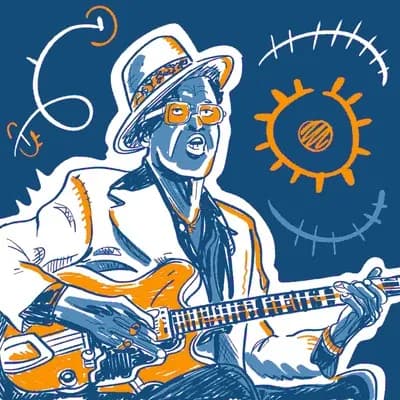
Lightnin’ Hopkins
15 March, 1912 – 30 January, 1982
As enduring as his sweeping double & triple-stops on the guitar is Hopkins' distinctive look, often with a slanted hat, or otherwise tidied hair, with dark sunglasses and possibly a cigarette in-hand. When the thoughts of many musicians, even laypeople, turn to "the Blues," Hopkins is often the first image (and sound) in their minds.
MuseScore tabs
No data found